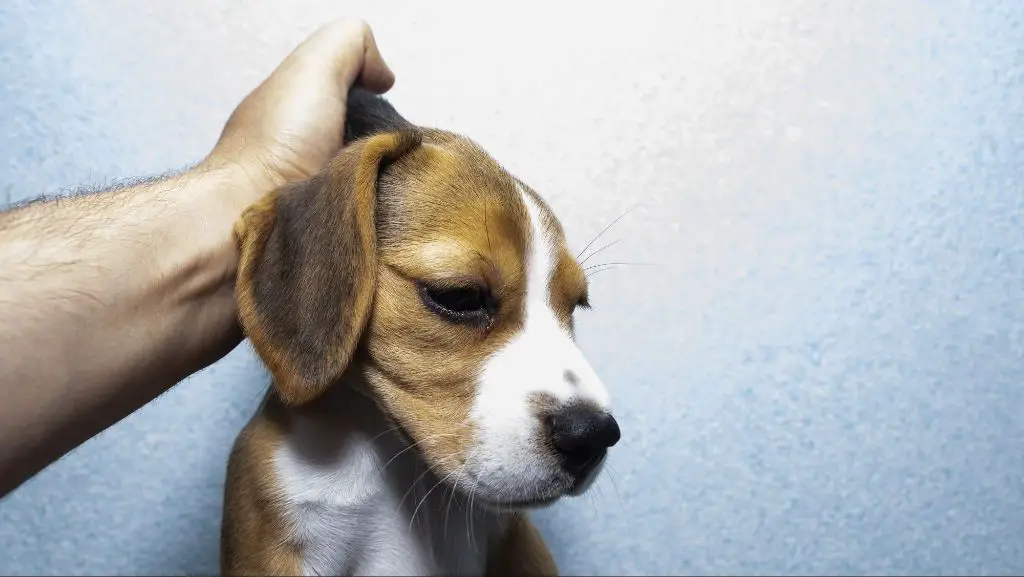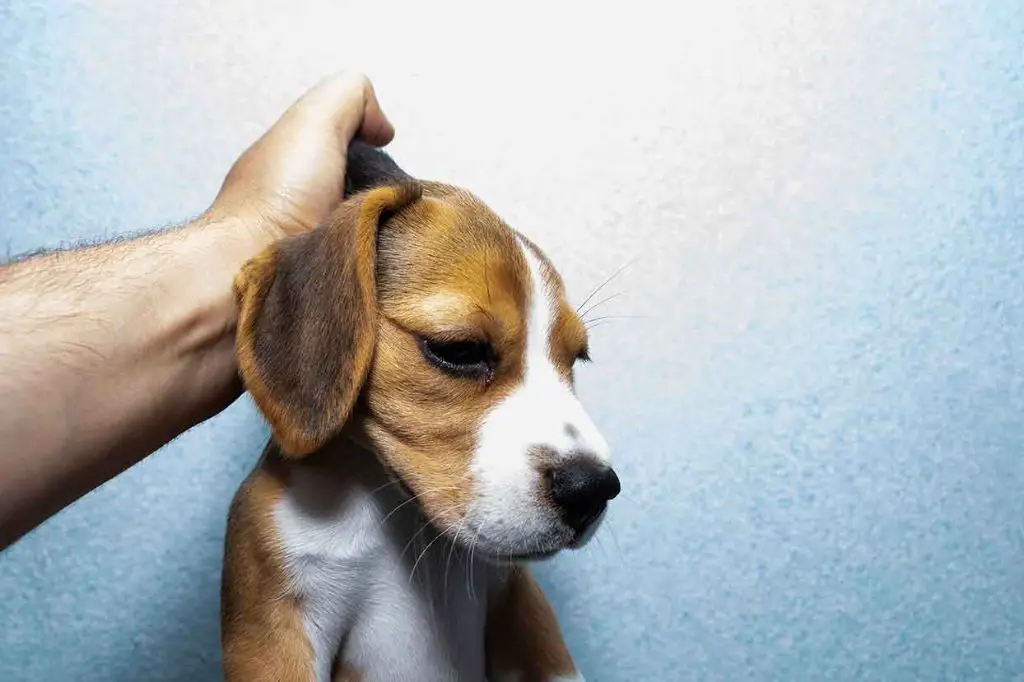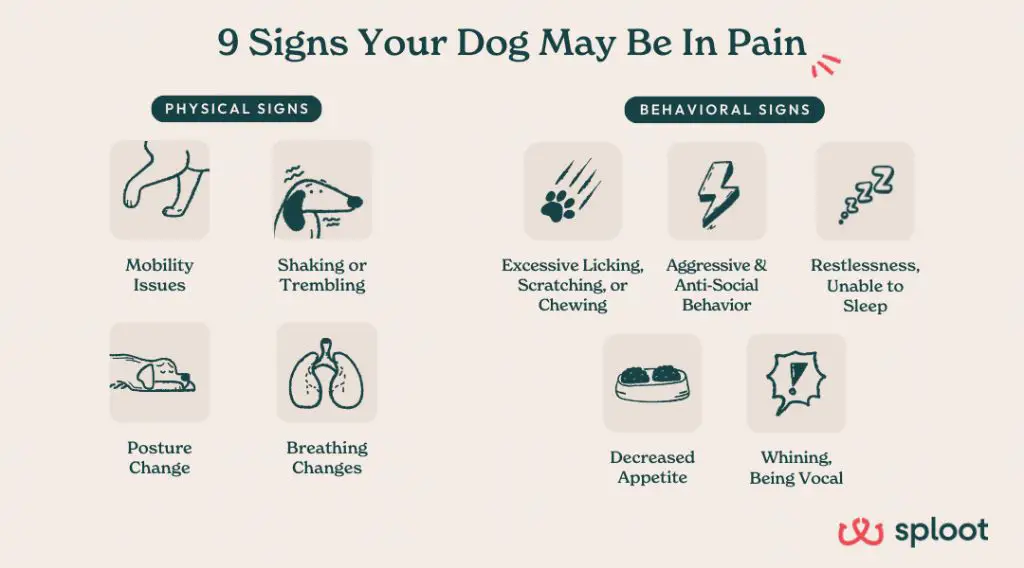Introduction
Scruffing is the technique of grabbing a dog by the loose skin on the back of its neck to restrain or move it. It is a common behavior mother dogs use with their puppies to transport them from one location to another. The skin on the back of a puppy’s neck is very loose, allowing the mother to pick up and carry her puppy easily without causing pain or discomfort. Though a natural technique for mother dogs and their pups, some question whether it is appropriate for humans to scruff adult dogs. This raises the question of whether it is acceptable or effective for dog owners to scruff their adult canines.
History and Origins
Scruffing likely originated from mother dogs carrying their young by the scruff of their neck. When puppies are young, their mothers will often transport them from place to place by gently grabbing the loose skin on the back of their neck and carrying them. This triggers a passive response in the puppy, causing them to go still and limp. It appears to be an evolutionary holdover from when wild canines would need to quickly and safely transport vulnerable pups.
According to research, this passive response to being scruffed dates back to ancient canine history. As dogs evolved to live with humans instead of in the wild, scruffing behavior persisted even after it was no longer essential for basic puppy transport and care.

Purpose and Effects
Lightly scruffing a dog can have a calming effect, as it triggers a natural response for puppies to go still when carried by the scruff of the neck by their mother. The pressure on the scruff triggers endorphins that relax the dog. Because of this response, some dog trainers use the technique sparingly as an interruption or redirection during training. Lightly scruffing for just a few seconds with limited pressure can get a dog’s attention and interrupt unwanted behaviors like jumping or nipping. However, the technique remains controversial and should only be done gently and as a last resort. [1]
While scruffing may distract or calm a dog momentarily, overuse, excessive force, shaking, lifting off the ground, or scruffing adult dogs can frighten them and lead to increased anxiety or aggression over time. The risks of using scruffing as a regular training method likely outweigh any temporary benefits for calming or interrupting dogs. More positive reinforcement-based methods are recommended instead.
Potential Risks
Scruffing adult dogs improperly can potentially cause physical injury or psychological harm (The Labrador Site). Grabbing the loose skin too forcefully may result in pulled muscles or even dislocated joints. The sudden pain and discomfort may also increase fear and anxiety in some dogs. Additionally, scruffing adult dogs repeatedly as punishment can damage the trust between an owner and their dog.
Even in puppies, the proper way to scruff is to grasp the loose skin gently – just firmly enough to gain control of the puppy’s body. Scruffing too aggressively can be very frightening and painful. An adult dog’s neck skin is much less elastic. Grabbing an adult dog’s scruff forcefully often causes them to yelp in pain (Quora).
In summary, the potential risks of improperly scruffing adult dogs include physical injury, increased anxiety/fear, and damage to the human-animal bond of trust. Scruffing should be avoided unless absolutely necessary, and done with great care to avoid hurting the dog.
Proper Technique

When holding a dog by the scruff, it’s important to follow the proper technique to avoid causing the dog pain or injury. Here are some key tips on holding the loose skin on the back of the neck properly:
Hold the scruff firmly but avoid gripping too hard. Use just enough pressure to get control of the dog without pinching the skin or putting pressure on the trachea. Holding too tightly can hurt the dog.2
Make sure to grip the loose skin at the back of the neck, not the dog’s collar or body. Pulling on anything other than the scruff can injure the dog.1
Do not lift the dog’s full weight off the ground when holding the scruff. Support most of the dog’s weight by holding under the chest or hindquarters while maintaining control with the scruff hold.2
Use the scruff hold only as long as needed for control, then release. Prolonged scruff holds can be uncomfortable for dogs.1
Avoid scruffing pups under 4 months old, as their necks are still developing. Puppies should not be lifted or controlled solely by the scruff.2
By following these proper technique tips, owners can use the scruff hold safely and humanely to get control of dogs when needed.
Alternatives

There are several humane alternatives to grabbing a dog by the scruff that should be considered first. Positive reinforcement training can help address the root cause of undesirable behaviors through reward-based methods. Using treats, praise, and rewards for calm behavior teaches the dog what you want them to do instead of punishing them for what not to do.
Other alternatives include using a towel or blanket to restrain the dog as needed for medical treatment or grooming. Applying gentle but firm pressure around the dog’s body or chest can also help provide a sense of restraint without causing pain or fear. Special harnesses and muzzles designed for safe restraint are additional options. For smaller dogs, placing them on an elevated surface reduces risk of injury if they squirm or struggle.
Training impulse control through “leave it” and “drop it” cues gives the dog an outlet to redirect their energy. Mental stimulation with puzzle toys can also curb hyperactive or high-energy behaviors. Building a strong human-animal bond through positive interactions helps the dog trust their owner for safe handling. Veterinarians recommend avoiding forceful scruffing whenever possible.
While grabbing the scruff may provide temporary control, addressing the underlying issues through humane training tailored to the individual dog’s needs leads to better long-term results. Patience and compassion go further than physical force for developing a well-behaved companion.
Making a Decision
Weigh the pros and cons carefully when deciding whether to scruff your dog. The appropriateness depends on factors like your dog’s temperament, size, age, health status, and the context of the situation. While scruffing can be an effective way to restrain a dog in certain scenarios, it also carries risks of injury or fear if not done properly.
If attempting to scruff your dog, start very gently at first to monitor their reaction. Use minimal pressure and hold their scruff for only a couple seconds to see if they show signs of distress. Release immediately if the dog struggles, cries out, or seems uncomfortable. Never scruff a dog out of anger or frustration.
Consider working on positive reinforcement training instead to curb unwanted behaviors. Reward your dog with treats and praise when they listen and respond well. This can reinforce good conduct without the need for physical correction. Training also strengthens the human-canine bond built on trust and understanding.
In the end, take your individual dog’s needs into account. While scruffing may work for some dogs, others may become frightened or resentful. Weigh your options carefully and use the gentlest approach possible if attempting to scruff.
Signs to Stop

It’s important to pay attention to your dog’s body language and reactions when being scruffed. There are certain signs that indicate you should stop this practice, including:
Yelping or crying noises – If the dog yelps or cries when you grab its scruff, even gently, it’s an indicator of pain or discomfort. The scruff has many nerve endings so sensitivity and discomfort are possible.
Struggling or shaking – If the dog struggles to get free or shakes its body when you scruff it, this is a clear sign of fear or distress. Forcing the dog to submit could increase anxiety.
Increased aggression or anxiety – Some dogs may become more reactive like growling or snarling after being scruffed repeatedly. It can also cause anxious behaviors like panting, pacing, or hiding.
Visible injury – Check for any signs of injury like cuts, scrapes or hair loss on the neck after scruffing. This shows it’s causing physical harm.
Overall body language – Stiffening up, cringing, or tucking the tail indicate a dog’s discomfort. Being highly submissive afterward also signals fear.
If you notice any of these consistent reactions, it means the dog is not tolerating the scruffing well. At that point it’s best to stop and use more positive training methods instead.
Conclusions
While grabbing a dog by the scruff can serve a functional purpose in some situations, it comes with risks of injury, fear, and stress if not done properly. Before scruffing your dog, be sure to learn the proper techniques, pay close attention to your dog’s signs of discomfort, and consider alternatives like positive reinforcement training. The main takeaways are to avoid scruffing adult dogs or lifting them fully off the ground, limit continuous scruffing time to less than 30 seconds, and gently release the scruff if resistance is felt. Check with a certified dog trainer for advice catered to your specific dog. With patience and care, you can determine if limited, brief scruffing may be an occasional tool that works for your dog, or if you’re better off relying solely on other methods.
References
This article was written based on research into dog training techniques, veterinary advice, and studies on canine behavior and physiology. Sources consulted include:
- American Kennel Club articles on puppy behaviors and training methods
- ASPCA advice on proper techniques for holding and restraining dogs
- Books and publications by veterinarians and animal behaviorists, including Dr. Ian Dunbar’s “Before and After Getting Your Puppy”
- Interviews with professional dog trainers and breeders on their techniques and recommendations
- Scientific studies and papers on neck sensitivity, pain receptors, and physical effects of scruffing in dogs and puppies
- Expert guidance from veterinarians on safe versus harmful restraint methods
The aim was to synthesize advice from reputable canine experts to provide readers with a comprehensive understanding of when and how to properly scruff a dog based on current knowledge.
